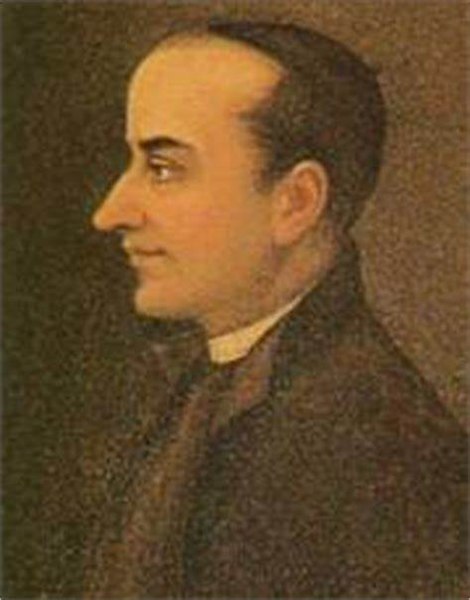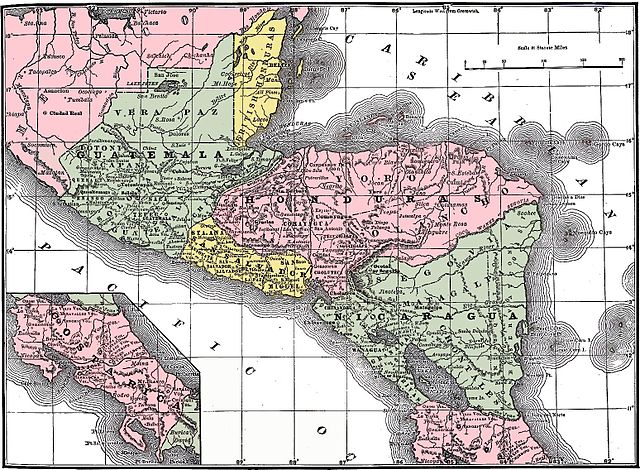History of Central America
Central America is commonly said to include Guatemala, Belize, El Salvador, Honduras, Nicaragua, Costa Rica, and Panama. This definition matches modern political borders. Central America begins geographically in Mexico, at the Isthmus of Tehuantepec, Mexico's narrowest point, and the former country of Yucatán (1841–1848) was part of Central America. At the other end, before its independence in 1903 Panama was part of South America, as it was a Department of Colombia. At times Belize, a British colony until 1981, where English instead of Spanish is spoken, and where the population is primarily of African origin, has been considered not part of (Spanish-speaking) Central America.
Central America until 1860, showing the Kingdom of Mosquitia.
José Matías Delgado y de León listed as the intellectual leader of the independence movement; Delgado was defined as influential, skillful, and intelligent, he started the revolutionary movements against the Spanish crown.
José Matías Delgado At the time of signing the Central American act of independence, in a representation of the meeting of September 15, 1821 of the Chilean painter Luis Vergara Ahumada.
Central America in 1892
Central America under Mexican rule
From January 1822 to July 1823, the Captaincy General of Guatemala, a former Spanish colony, was controlled by the First Mexican Empire, and briefly, the Supreme Executive Power—the provisional government that succeeded Mexican imperial rule. The captaincy general consisted of the provinces of Chiapas, Costa Rica, El Salvador, Guatemala, Honduras, and Nicaragua—the six southernmost provinces of the Mexican Empire. The incorporation of Central America brought Mexico to the height of its territorial extent.
Agustín I, Emperor of Mexico
Painting of Manuel José Arce, who organized the Salvadoran resistance against Mexican imperial forces
Gabino Gaínza
Vicente Filísola








